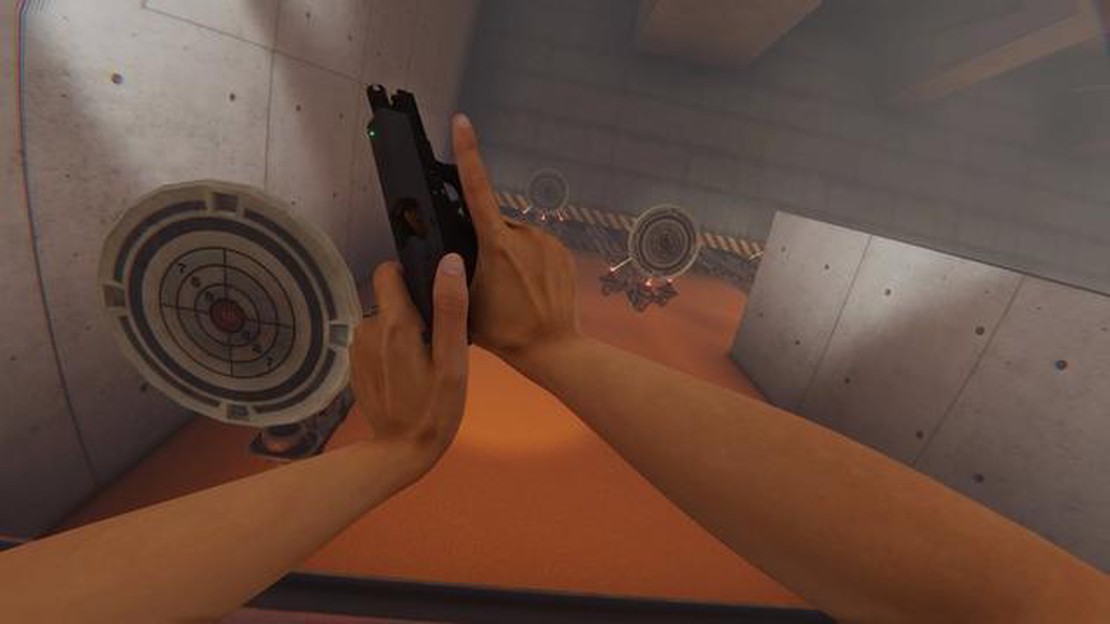Where to Find Flabebe in Pokémon Scarlet and Violet – All Forms
Where to find Flabebe in Pokémon Scarlet and Violet – All forms If you’re playing Pokémon Scarlet and Violet and you’re on the lookout for Flabebe, …
Read Article
Bonelab is an immersive virtual reality (VR) experience that allows users to explore the human body in a unique and interactive way. One of the standout features of Bonelab is the ability to create and utilize custom avatars, providing users with the opportunity to personalize their virtual experience. In this step-by-step guide, we will walk you through the process of creating your own custom avatar in Bonelab and show you how to make the most of this exciting feature.
Step 1: Launching Bonelab
Before you can create a custom avatar in Bonelab, you will need to launch the application on your VR headset. Make sure that your headset is properly set up and connected to your computer, and then navigate to the Bonelab application in your VR library. Once you have selected Bonelab, put on your headset and get ready to delve into the world of virtual anatomy.
Step 2: Accessing the Avatar Creation Menu
Once you have launched Bonelab, you will be greeted with the main menu. From here, you will need to locate and select the avatar creation option. This may be labeled as “Create Avatar,” “Customize Avatar,” or something similar. Once you have found the option, click on it to proceed to the avatar creation menu.
Step 3: Customizing Your Avatar
Now that you have accessed the avatar creation menu, it’s time to let your creativity shine. Bonelab offers a variety of customizatioStep 4: Saving and Utilizing Your Custom Avatar
Once you are satisfied with your custom avatar, it’s time to save your creation and bring it into the Bonelab experience. In the avatar creation menu, look for the “Save Avatar” or similar option and click on it to finalize your changes. Your custom avatar will now be available for you to use within Bonelab, allowing you to explore the human body and interact with the anatomical models using your personalized virtual self.
Note: The process of creating and utilizing custom avatars may vary slightly depending on the version of Bonelab you are using. Be sure to consult the Bonelab documentation or support resources for specific instructions tailored to your VR headset and Bonelab version.
Read Also: Where to Find the Lost Helmet in Big Shots - Fall Guys Spartan Showdown Event
Creating and utilizing custom avatars in Bonelab adds an extra layer of personalization and immersion to the virtual anatomy experience. By following this step-by-step guide, you will be able to create your own unique avatar and embark on a virtual journey through the intricate wonders of the human body.
Bonelab is an incredible virtual reality platform that allows users to create and interact with custom avatars. This step-by-step guide will walk you through the process of creating and utilizing your own custom avatars in Bonelab.
With this step-by-step guide, you’ll be able to create and utilize custom avatars in Bonelab with ease. Get creative and have fun exploring the endless possibilities that Bonelab offers!
To create and utilize custom avatars in Bonelab, you first need to access the Avatars menu. Follow the steps below:
Read Also: Learn the Frozen Lightning Spear Incantation in Elden Ring: Step-by-Step Guide
By accessing the Avatars menu, you will be able to create, modify, and choose from a variety of custom avatars to represent yourself in the Bonelab virtual environment.
Once you have launched Bonelab and are ready to create your custom avatar, follow these steps:
Creating a custom avatar allows you to truly make the character in Bonelab your own. Whether you want your avatar to resemble yourself or create a unique character, the Custom Avatar Creator tool provides a wide range of options to customize your avatar to your liking.
After creating your custom avatar in Bonelab, you can now start using it in the virtual reality world. Here are the steps to follow:
Remember that you can continue customizing your avatar even after loading it into Bonelab. To make changes to your avatar, follow the steps you learned in Step 2 and then repeat the process of loading the updated avatar in Bonelab.
Utilizing your custom avatar allows you to personalize your experience in Bonelab, making it more immersive and enjoyable. Explore different interactions and activities within the virtual reality world while embodying your unique avatar.
Now that you know how to create and utilize custom avatars in Bonelab, you are ready to dive into the exciting VR experience that awaits! Enjoy exploring, learning, and connecting with others in this virtual environment.
Where to find Flabebe in Pokémon Scarlet and Violet – All forms If you’re playing Pokémon Scarlet and Violet and you’re on the lookout for Flabebe, …
Read ArticleHow to get Two Segment and Three Segment Dudunsparce in Pokémon Scarlet and Violet If you’re a Pokémon trainer playing Pokémon Scarlet and Violet, you …
Read ArticleThe best moveset for Hydreigon in Pokémon Go Hydreigon is a powerful Dragon/Dark-type Pokémon that has become a fan favorite in Pokémon Go. With its …
Read ArticleHow to get the Falcon Ignition Key in Final Fantasy XIV Final Fantasy XIV is a popular MMORPG that offers players a vast and immersive world to …
Read ArticleHow to watch YouTube videos with friends on Discord Discord has become a popular platform for gamers and communities to connect and communicate. …
Read ArticleHow shareholders meetings work and how to beat them in Yakuza: Like a Dragon If you’ve been playing Yakuza: Like a Dragon, you might have come across …
Read Article